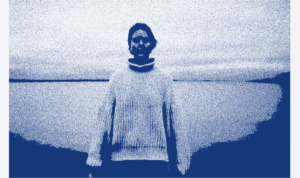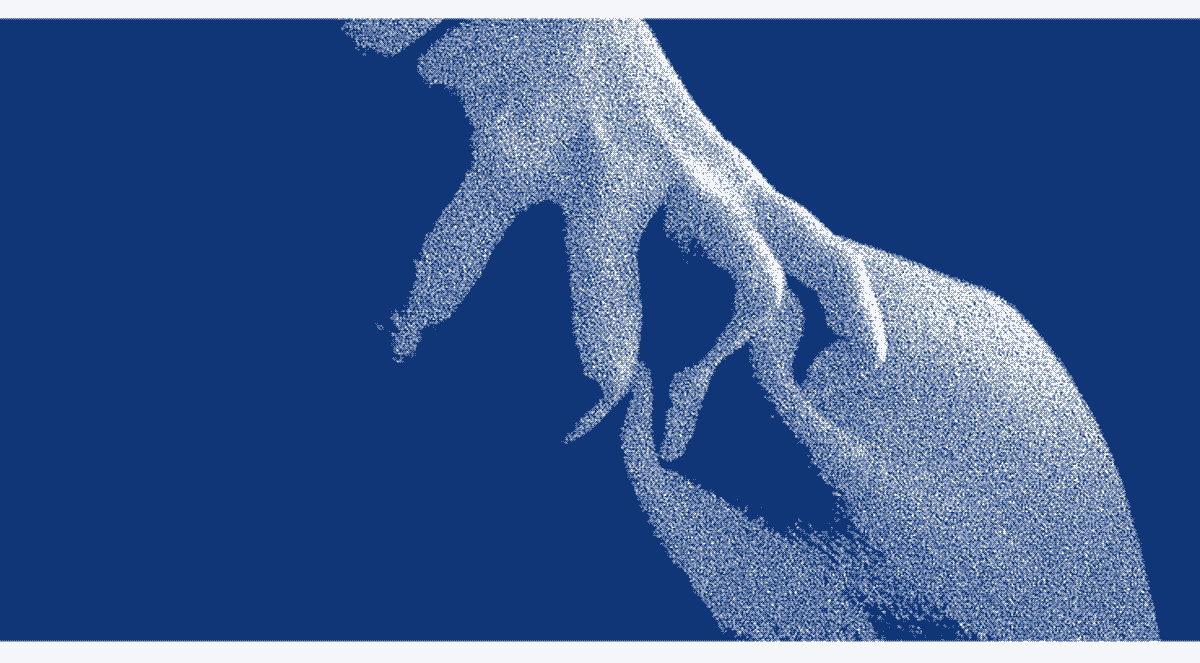The line “You and I could never communicate like two normal human beings” stands out in a film that primarily communicates through poetic narration and abstract images. It is also, frankly, a very funny exchange, its bluntness interrupting the poetry. It may even be a tongue in cheek reference to Elegy’s structure itself, which director Parish Sharma’s artist statement describes as “an attempt to construct a cinematic reality that projects the unconscious imagery of a poet in grief.”
Elegy then takes the form of a video poem, with a narrator/poet (Adriana Marchand) whose stanzas operate in tandem with director Sharma’s images to depict the end of her relationship (her former partner is played by Navid Charki.) Even by the film’s conclusion, it remains unclear which images capture “real” memories — conversations and events that are the poet’s inventions, distortions, and modifications. This is not to suggest the film gives us a reason to doubt or mistrust the poet, but rather to make note of how poetic language functions. So often we assume the filmed image presents unmediated truth because of the camera’s supposed ability to capture reality as it is, whereas poetic verse is the opposite — meticulously constructed (and therefore mediated) by a single author. If conventional wisdom believes the cinema has a unique ability to capture broader, objective truths about reality, then poetry and verse must best convey personal, subjective truths.
What is the result of combining these two forms? For Sharma, the video poem seems to serve as an avenue for overcoming the limits of verbal and written language. Neither the images nor the verse alone prove sufficient for the grief the film attempts to communicate, but why exactly is that? Does the abstract really express something that the concrete cannot? Or does it instead offer an alternative when being direct is too difficult? The bit of dialogue I reference at the beginning of this piece, poetic itself in an understated way captures this tension that underscores the film.
The film is not entirely “poetic” though, which is to say there are scenes ostensibly set in the real world, capturing the mundane and the banal. But the language remains almost the same between the two modes and the characters talk at each other, rather than to each other. In one sequence Sharma cuts between two fights which play out almost the exact same way, albeit the roles reverse. The two scenes overlap, even synchronize, when both partners say, “Let’s start over.” Another example of this: we see the pair kiss on a beach, then he kisses her in the diner (his attempt to resolve the aforementioned fight.) On the beach, she playfully pushes him away and runs. He chases her. In the diner, she shoves him off of her, sending him from his chair and onto the ground.
It seems the camera’s movement and its stability informs the viewer if what they are watching is real or not, with presumably real-world scenes adopting a handheld style with a constant yet subtle movement. The poetic sequences, then, in order to preserve the ethereal quality, keep the camera still. But I’m not sure what to make of the characters or their behavior. We see what feels like the same fight three different times in three different spaces. The characters never speak like “normal human beings,” even in the “real” world. Again, is poetry simply a means of working around this communication breakdown? I would never dare to suggest the film owes me clarity, but the characters’ opacity leaves me unsure what to make of their relationship, especially when most of what we see involve the poet physically pushing her ex-partner away (playfully on the beach, defensively in the diner, and abruptly in the forest.) There are a few moments of intimacy and play, but not once is there a conversation that does not involve their incompatibility or their breakup.

“When my wounds caused by your remembrance begin to heal, I find an excuse to think of you once again,” another line of verse, plays over a series of close-ups of the couple’s hands moving across each other’s bodies. It clarifies a bit of my confusion, or at least makes me feel better about being confused. Maybe I’m supposed to be. A bit of intimacy as a break from what seems like perpetual conflict finally provides a brief look at why these characters were even together in the first place. The film wants to function like a memory, and is largely successful in this effort. It jumps around, it embellishes and obscures (like memory, but also some poetry) and conveys otherwise contradictory feelings and attitudes. It alienates at times, yes, but it’s disinterest in making the boundaries between the real and dream evident also make it compelling.
Sharma’s images are the highlight of the film. Low light sequences near the ocean and in the woods accentuate the beauty of the environment, emphasizing rich blues and greens that almost feel oppressive at times (the endless sea, the vast forest.) Is this beauty exclusive to Sharma’s poetic world? Or are these images “real”? Or is my own need to categorize besides the point in a film that so liberally mixes memory, dream, and spirituality with the real so that the boundaries between each are blurred?


